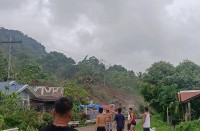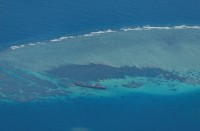QUEZON CITY, Oct. 6 — The Department of Environment and Natural Resources (DENR) is urging more organizations and companies to join the government’s “Adopt-an-Estero” Program, which has proven to be effective in improving the local environment and promoting public health and safety.
During the two-day forum which started last September 29 at the Sulo Riviera Hotel in Quezon City, DENR’s Environmental Management Bureau (EMB) touted the success of the program and the number of dying water bodies it has revived with the help of its private partners.
EMB Assistant Director Eva Ocfemia said the program was instrumental in improving the condition of waterways, noting that fewer incidence of flooding or quicker subsidence of flood waters in areas covered by the program. Ocfemia said getting rid of the floating debris has allowed rivers and creeks to flow more freely.
The Adopt-an-Estero Program is a collaborative undertaking among the communities, private entities, local government units and the DENR. It was a direct response to the continuing mandamus by the Supreme Court for agencies led by the DENR to clean up Manila Bay, particularly through esteros and waterways that empty into it. Since the program was launched in 2010, a total of 569 companies and groups have become DENR partners and 346 water bodies have been adopted and cleared of solid wastes nationwide.
Under the program, partners from the private sector and organizations “adopt” a waterway to improve its water quality through regular cleanup activities such as dredging, collection of floating debris, planting of appropriate species, and installation of trash traps. They also conduct information and education campaigns in surrounding communities and mobilize the citizenry in helping clean up the waterway.
The program likewise seeks to institutionalize good sanitation and solid waste management practices among the estero communities through education and actual participation. It also aims to reduce water-borne diseases, particularly among children and vulnerable groups.
“The program is not just a step forward in our goal of achieving cleaner water. In the course of the cleanup activities, the community also increases awareness on water issues, complementing the efforts of the DENR in educating our people on environmental citizenship,” Ocfemia told forum participants.
In the same forum, General Manager Corazon Jimenez of the Metropolitan Manila Development Authority (MMDA) reported the results of the five “Estero Blitz” activities the agency has done since 2011.
Jimenez said the MMDA was able to collect more than 23 million cubic meters of debris after cleaning up 96 out of the 279 rivers, creeks and esteros in Metro Manila.
She also announced a scheme by the MMDA entitled “Barangay Power 2015” in which the agency would award P2 million each to the barangay with the cleanest river or creek and most compliant to Republic Act No. 9003 or the Ecological Solid Waste Management Act.
The MMDA will also award the community that adopted the best measures that ensured dengue-prevention and recycling for sustainable livelihood projects.
Meanwhile, the EMB reported that of the 346 water bodies adopted nationwide, 75 have registered an improvement in dissolved oxygen levels, while 78 have improved biochemical oxygen demand (BOD). Dissolved oxygen levels that are too high or too low can affect water quality and harm aquatic life.
BOD measures how much oxygen is used by aquatic microorganisms in aiding the decomposition of organic matter in the water. Too low BOD levels mean that other aquatic organisms may not have enough oxygen to survive. (DENR)







